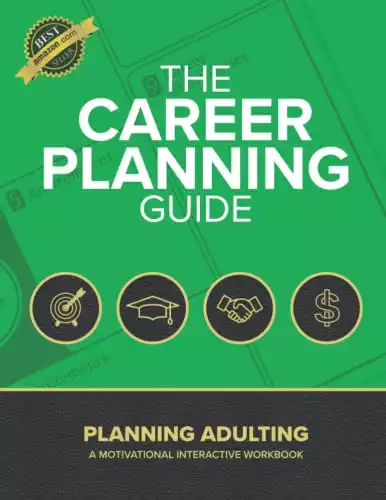We may receive compensation when you click on product links from our partners. For more information, please see our disclosure policy.
Practically every parent wants to ensure their child’s future success, but it can be a little difficult to know exactly what future skills will be useful. Childhood is also a time of exploring a lot of different interests. You might think your child will someday be a painter because they show a brief interest in art, but then next week they’re wanting to learn an instrument.
The key is to try to tap into your child’s potential as much as possible, without constricting them or pulling them in completely different directions. For example, maybe they could start playing a musical instrument now, but could also go on to study engineering at university. The important thing is not to force them, but to provide opportunities for them to pursue any interests.
In this article, we’ll outline some ways you can help your child develop a few critical skills early on that will be highly valuable to future job recruiters.
Coding and development
The ability to code will be one of the most highly valued skills in numerous industries, as the world increasingly depends on digital solutions. Even if your child doesn’t go on to become a full-time software developer, just knowing a bit of code will surely improve their resume to future employers. Even something that sounds relatively simple, like making two spreadsheets pass information between each other, requires a little bit of scripting know-how. Check out https://www.pcguide.com/feature/beginners-guide-to-learning-how-to-code/ for a guide on coding, especially for beginners.
Practically every parent wants to ensure their child's future success, but it can be a little difficult knowing exactly what future skills will be useful. The key is to try to tap into your child's potential as much as possible.Click To Tweetcoding programs specifically designed for children, which explore the fundamental concepts in simple-to-understand language, using gamified interfaces and score-tracking.
CodeMonkey’s games for kids is one excellent example, and their self-paced courses allow the child to comfortably develop their skills at their own level of comprehension. The gamification of complex subjects for children is a popular
Engineering and mathematics
Engineering can cover a rather broad range of specialized fields, from civil engineering and bridge construction to AI and robotics technology. In 2020 the most in-demand engineering fields were automation, robotics, biomedical, systems software, and alternative energy. There’s no crystal ball telling us what will be most in demand in the next 20 years, but we can easily predict that robotics and AI will be at the top of the list.
Engineering is typically very math-intensive, depending on the specific field, and robotics are no exception. Machine learning uses a lot of algebraic formulae, and some calculus as well at the higher levels. Algebra in public school curriculums typically starts around 7th grade, so if your child isn’t learning algebra in school yet, it’s a good idea to start introducing them to the core concepts.
Spatial awareness and visual production
Spatial awareness – the ability to visualize objects and how they fit into 3D space – is second only to basic math as the building block for STEM learning. It’s one thing, for example, to be able to visualize a construction in your head, but to be able to transpose the concept onto a medium is something else entirely.
Visual production can cover a lot of different things, from simple graphical design to an engineer’s blueprints for a bridge or civic center. It’s part artistic ability, yes, but also a critical skill for technology creation, robots, virtual reality, and animation. Helping to improve your child’s spatial awareness will surely pay off in these areas.
3D printing is particularly suited to this skill, as it requires a sharp eye for proportion, product, and detail. Assembling with a 3D printer relies heavily on knowing the print size and mold size accurately. Similarly, programming a robot requires that you visualize the entire application in your head.
While it’s unlikely that any junior in high school would be expected to create software for autonomous cars, coding is equally about design and interactivity, much like any engineering project.
Clear and concise communication
It is a highly beneficial ability to be able to explain yourself effectively and even charismatically. When your child explains ideas in class or pleads for additional privileges with you, he must state exactly what he means, clearly and tactfully.
You can encourage your child’s development in precise communication by establishing a set of expectations for proper speaking and writing and asking your child to develop a reliable set of communication goals with you.
Interpretation and analysis
The ability to analyze data is highly useful for a number of career industries, and really just overall life in general. Every decision we make is usually based on contextual interpretations, risk-reward analysis, and experience.
How will we know whether to run a marathon based solely on weight and age? How about a musician or amateur filmmaker? How will we make those risky career decisions?
When it comes to career decisions, some of the most important choices are the ones we choose to not even look at. You can help improve your child’s decision-making abilities simply by giving them time to think and analyze a situation rather than just reacting and making decisions. The more information we can present them with, the more they will learn about life and the choices they make.
A motivational interactive workbook in which students and undecideds choose a career path directly inside the guide.
Use this direct, specific method to educate, understand, and inspire yourself to reach your full potential in only 10 chapters.




